Meet Danielle Serra and Janice Pang, two exceptional individuals seamlessly balancing the demands of academia and their passion for curling. In this profile Q&A, the duo shares their unique journeys into the world of curling, from a chance encounter at a university event to becoming members of the University Varsity Curling team. As biomedical engineering PhD candidates, they shed light on the parallels between their scientific pursuits and the strategic intricacies of curling. From explaining the basics of the game to detailing their roles on the ice, Danielle and Janice offer insights into the mental and physical preparations required for both the lab and the curling rink.
How did you get started in curling?
Danielle
As a retired figure skater, I’ve naturally always had an inclination to on-ice sports. I started curling in high school after being intrigued by noticing a ‘Try Curling!’ poster in the halls. Naturally, I tried it, ended up loving it, and was pretty good at it! Curling provided an outlet to escape from studies and to immerse myself into the game physically and mentally. I’ve made many friends since starting the sport in my hometown, through my undergraduate degree, and now in my PhD. I often joke around with my parents saying I’ve found my retirement sport early! I am grateful for my curiosity in giving the sport a chance in highschool- it will without a doubt remain in my life as a lifelong sport.
Janice
My curiosity for curling started during the Vancouver 2010 Olympics in my hometown. During those games, I was glued to the television watching every sport I could. I was drawn to how players planned each shot meticulously and executed the pushing of the rocks down the ice with such technicality. I was compelled to try out the sport, convinced perhaps that I could do the same. It was during that winter, as a 11 year old, that I remember setting up some form of curling rings in the hallway of my house. I started hurling golf balls down the hall with a lunge similar to that of my Olympic curling heroes, Kevin Martin and Eve Muirhead. Of course, there was no sweeping involved and the set up reassembled more of bocce than curling, but this makeshift game of curling in the hallway at home kept me occupied for hours. I caught the attention of my parents and I was able to convince them to register me into the junior program at the Coquitlam Curling Club. The real lunging and sliding down the pebbled ice at the curling club began.
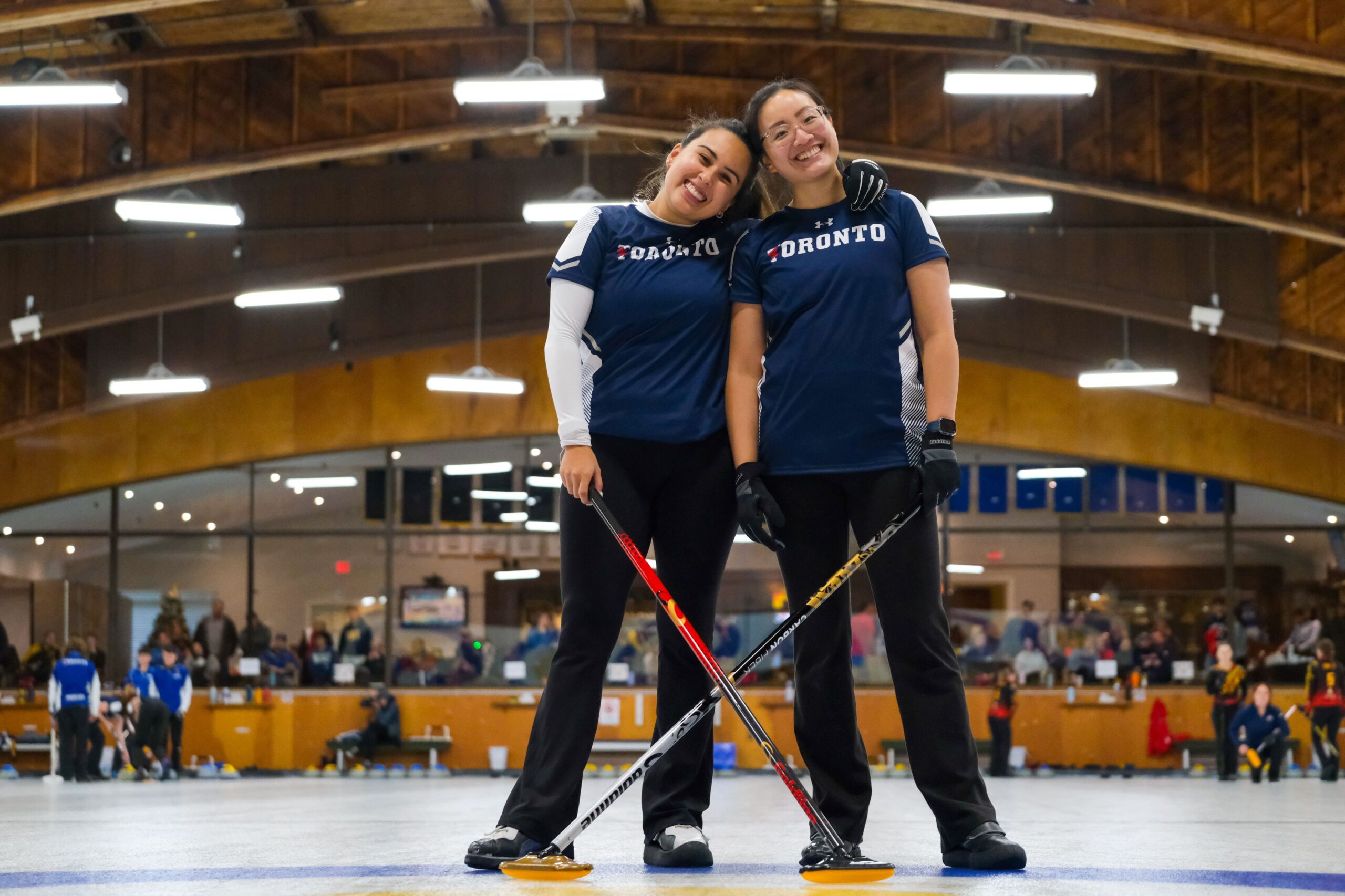
It’s rare to have two people from the same Institute in the University Varsity team. How did you meet?
In our first year, we both entered the UofT Biomedical Engineering Students’ Association (BESA) Blue Jays game raffle draw. We were both lucky enough to win tickets to the game and coincidentally sat next to each other. Baseball talk led to curling talk when Danielle brought up she was a part of the varsity curling team. This transpired to Janice joining the team the next season.
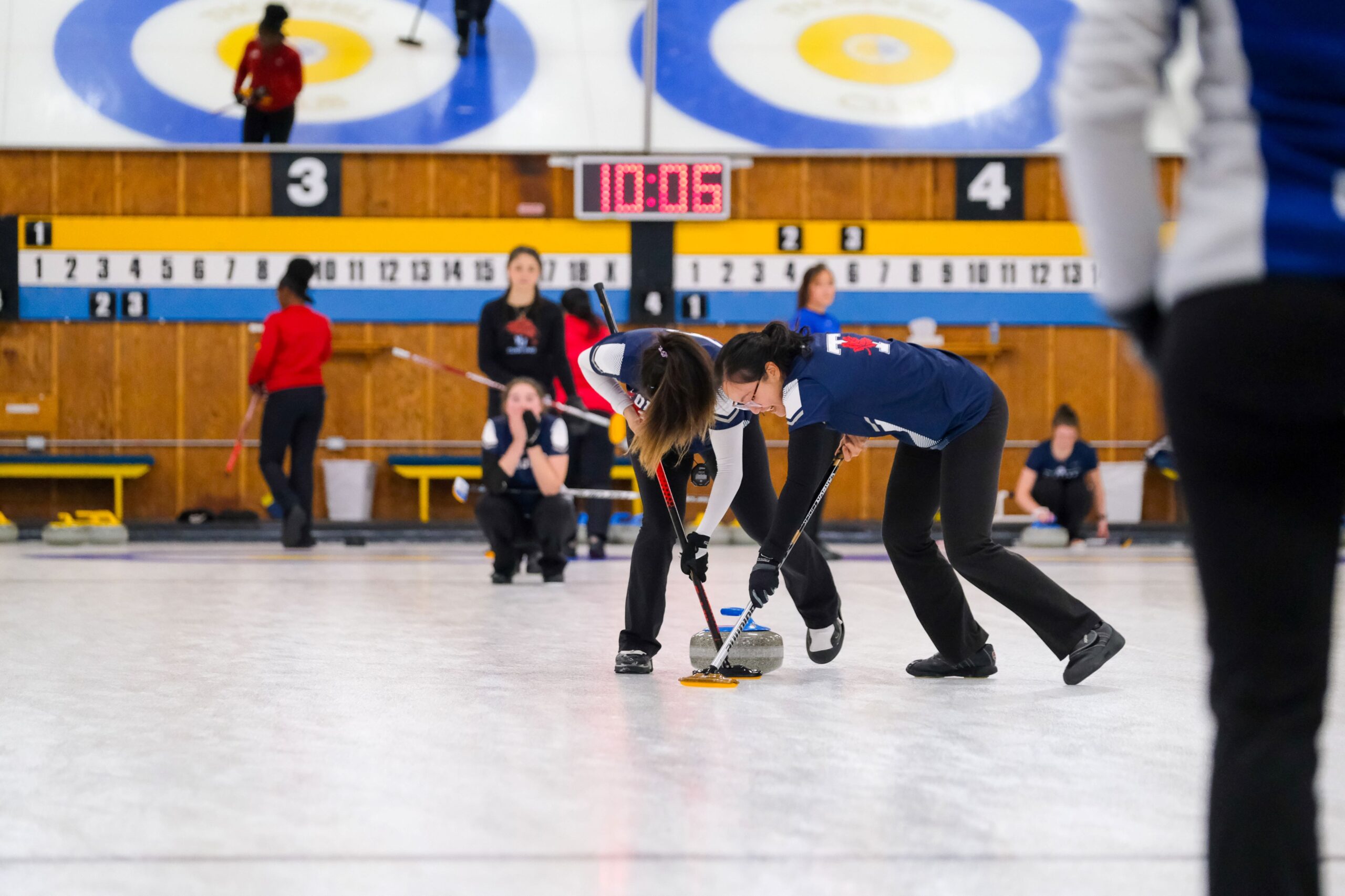
Can you briefly describe how the game works? How does a team win the game?
Curling involves players sliding rocks down a sheet of ice to a target area called the house. There are two teams each with four players that take turns sliding heavy, polished granite rocks across the length of the curling ice towards the house. Each team has eight stones and the aim of the game is to have the highest score at the end of the game. Points are scored for each stone of the same colour that rests closest to the centre of the house at the conclusion of each round, called an end, which is completed when all rocks are thrown by each team. A game usually consists of eight or ten ends.

What is your specialty in the game?
Danielle
I am a front end player on the team. This means my specialty is sweeping and setting up a good end (round) by throwing rocks that will give us the best chance of scoring many points. I particularly love sweeping because I like the intricate footwork and the adrenaline that comes from carrying my teammate’s rocks and making a true team effort shot. But sweeping does not only include sweeping on command. I use the experience from watching thousands of rocks and the time from my stopwatch to predict the weight of each rock thrown down to milliseconds. My communication on how fast the rock was thrown becomes essential information for the back end players. I’ve gained valuable experience throwing front end rocks which have accelerated my performance playing on my Team Mexico-affiliated 2 player mixed doubles team aside from varsity curling.
Janice
In contrast to Danielle’s position, I am a back end player on the team, meaning I throw the last rocks on the team and strategize rock placement and moves. Essentially, I am the chess player of the match. My speciality is learning about teammates’ tendencies, and strategizing the game around each player’s strengths to give the team the highest percentage of execution and the best chance to win the game. Beyond strategy, my strength lies in recognizing the angles at which to hit the rocks. The angles are imaginary lines for lining up shots. In some instances, rocks can travel very quickly down the ice to take out opposition rocks. As such, knowledge of how rocks line up can be crucial in making split second decisions on directional sweeping of rocks, which help guide the rock to where it should make contact with the opposition stone. Ultimately, my strength to effectively communicate with teammates has been key to learning about each individual’s strengths and weaknesses, and decision-making during shots.
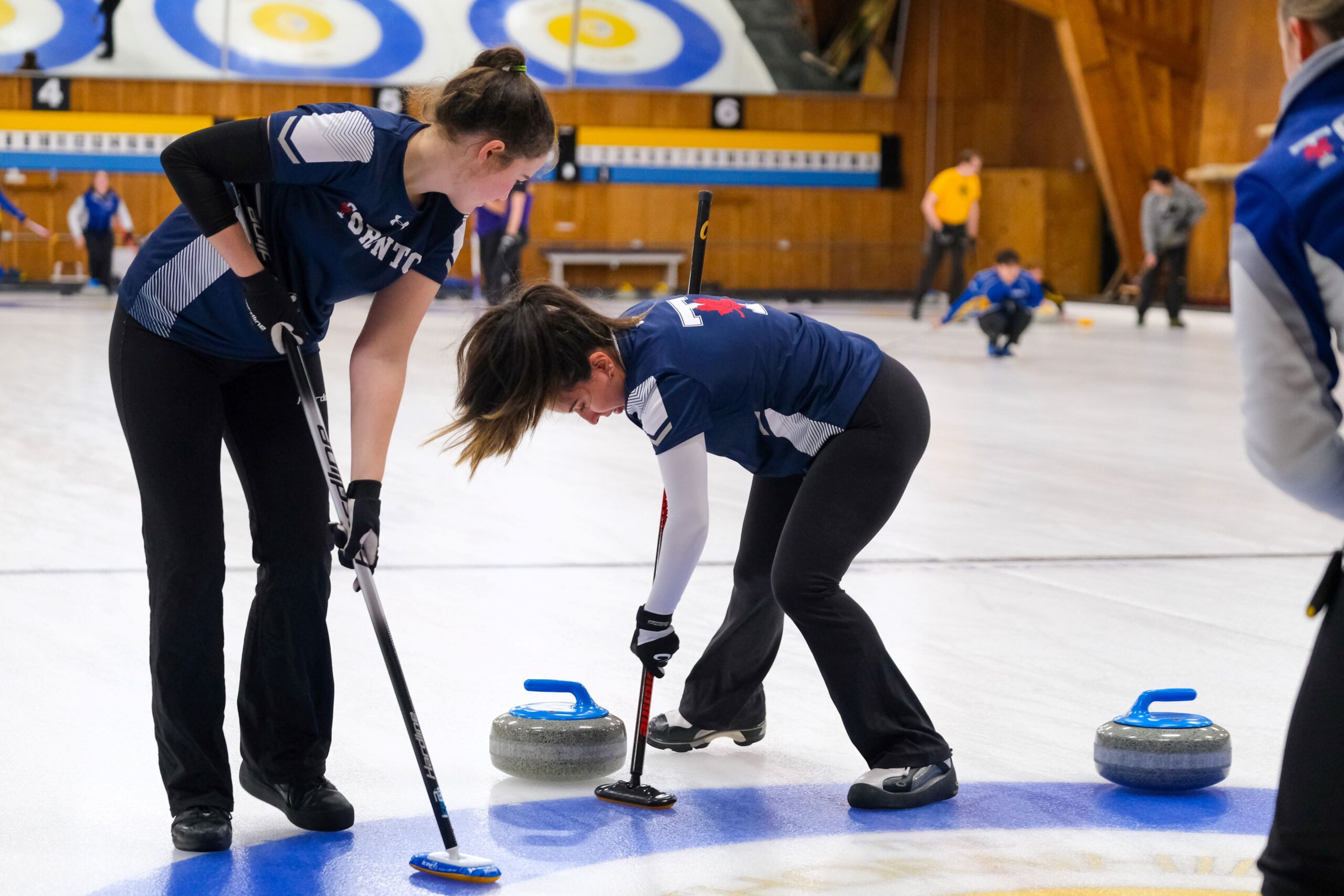
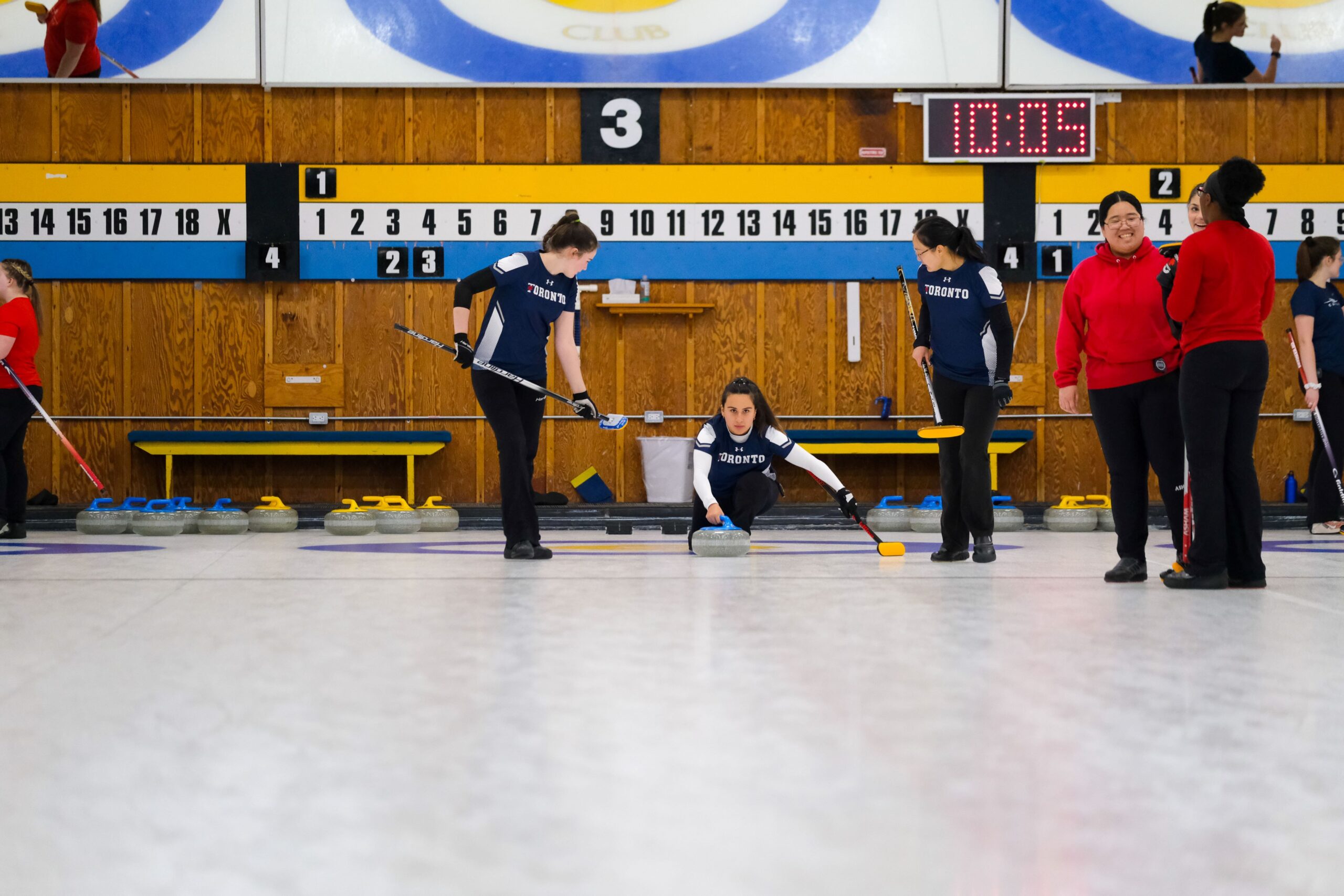
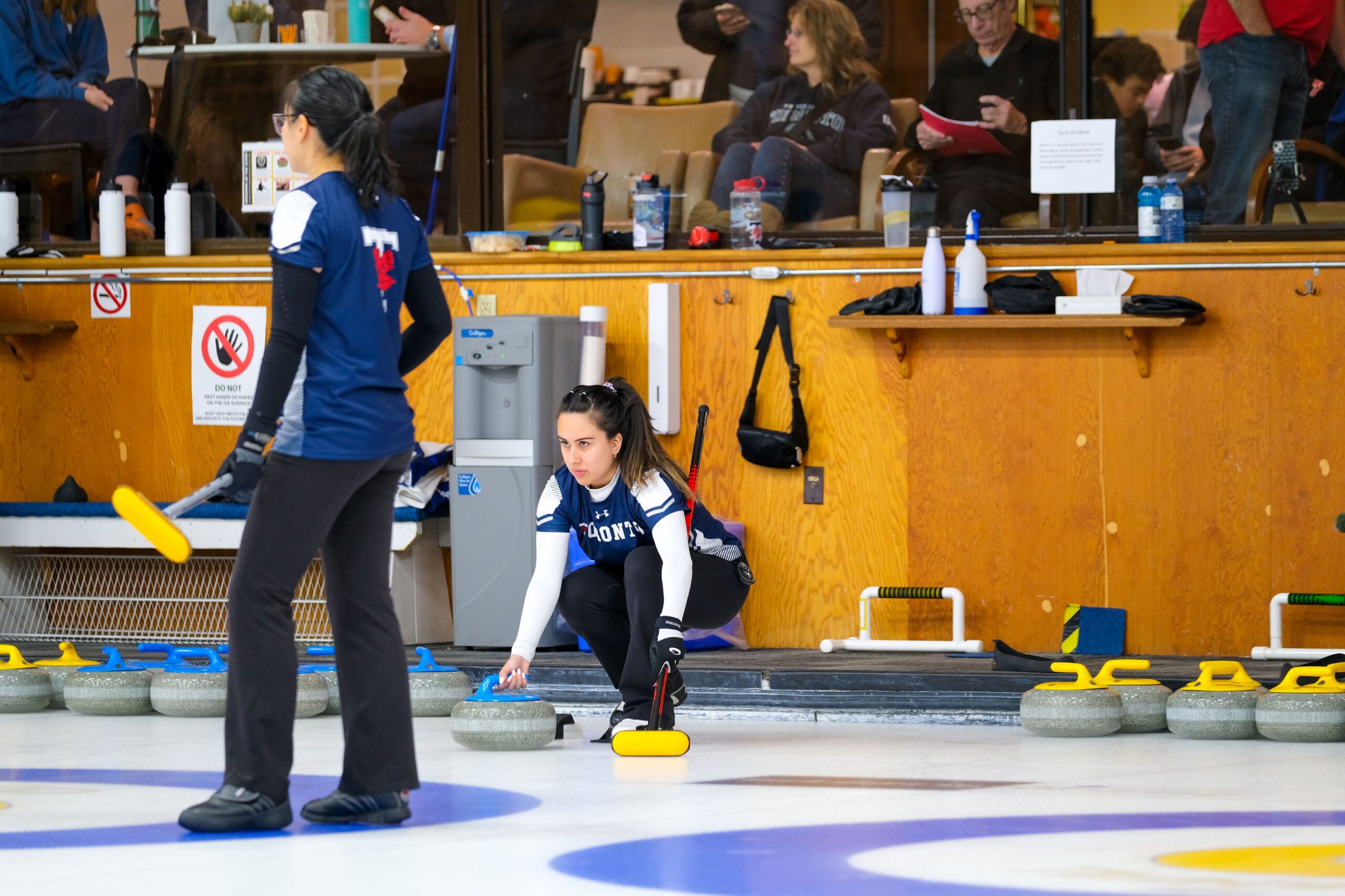

What is a memorable experience you shared on ice?
A memorable experience we shared on the ice was when Danielle started humming a song on the ice after sweeping a rock and Janice immediately started humming the exact same song. This is probably a tribute to the amount of time we spend together at the lab and on the ice.

Teach me some commonly used phrases (or slang) used in curling
End:
Each round of play similar to each period in hockey. One end is complete when all 16 rocks – two per person and eight per team – have been shot. Games are usually 8 or 10 ends
The House:
The 12’ diameter target/bullseye at the end of each sheet
Button:
The middle of the house. The objective of the game is to get your stones closer to this than the other team
Hack:
Angled foothold device used by the thrower to push off for delivery of the stone
Hard:
You yell this when you want teammates to sweep faster
Hammer:
The last stone in each end
Take out:
Removal of stone from the playing area by hitting it with another stone
Guard:
A stone placed in front of the house to act as a protection of another stone inside the house
Draw:
A scoring shot designed to stop inside the house
Steal:
Scoring in an end without having the advantage of a hammer
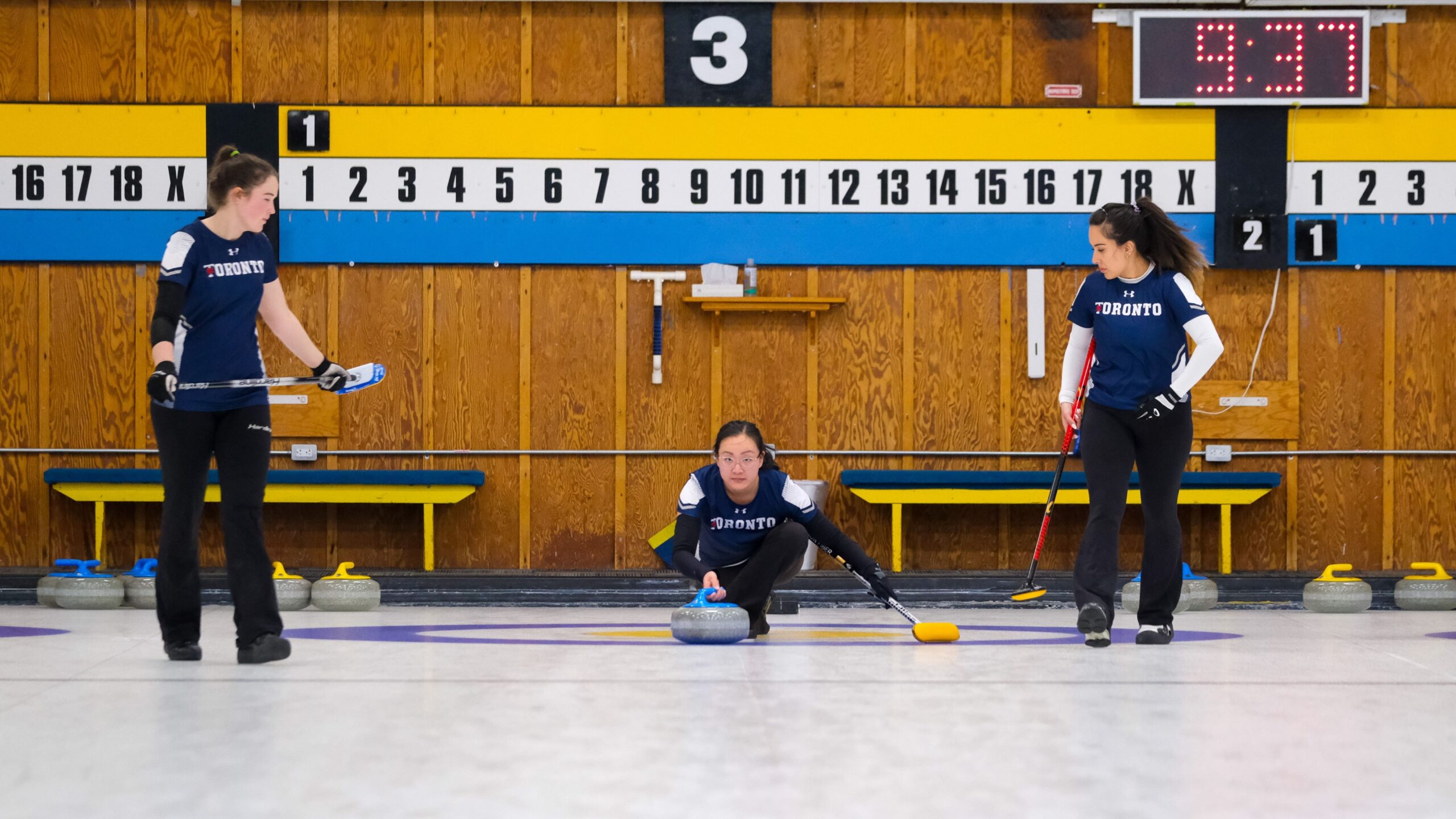
What do you do to prepare yourself mentally and physically for a curling match?
Danielle
As with every sport, progress and success does not only come on the ice. Because ice-time at the curling rink is timely to commute to, and difficult to attain, I like to think of my time on the ice as the opportunity to perform and put everything together. Off-ice work includes strategy talk with I regularly talk to Janice about, gym days focusing on cardio and flexibility, and determination to get to the rink multiple times a week. This year my goal is to visit Janice and try her practice sweeping dry-land mat to improve my sweeping game even further. I am also training this year to improve my cardio by running a half-marathon. Surely there will be team training opportunities with each of these endeavours.
Janice
Curling is an incredibly technical sport that requires repetitive training of the same motions associated with delivery and sweeping. As Danielle mentioned, obtaining sufficient ice-time for training is difficult so we rely on a lot of off-ice work. This includes weight training in the gym to acquire the strength necessary to sweep up to 48 rocks a game, and push 44 pounds of granite stone down the ice. I have also built a mat at home to practice sweeping on dry-land. In addition, running is a huge part of my preparation during off-season and in-season, as cardio is extremely important for building endurance and cardio capacity to maintain peak performance for the entire duration of the game. During the summer, running has been a great opportunity to connect with Danielle as we plan runs together around the city. Execution of shots is critical, especially in games where I am tasked to throw last stones with the game on the line. As a result, I have been incorporating visualization before and during games as part of my mental preparation.
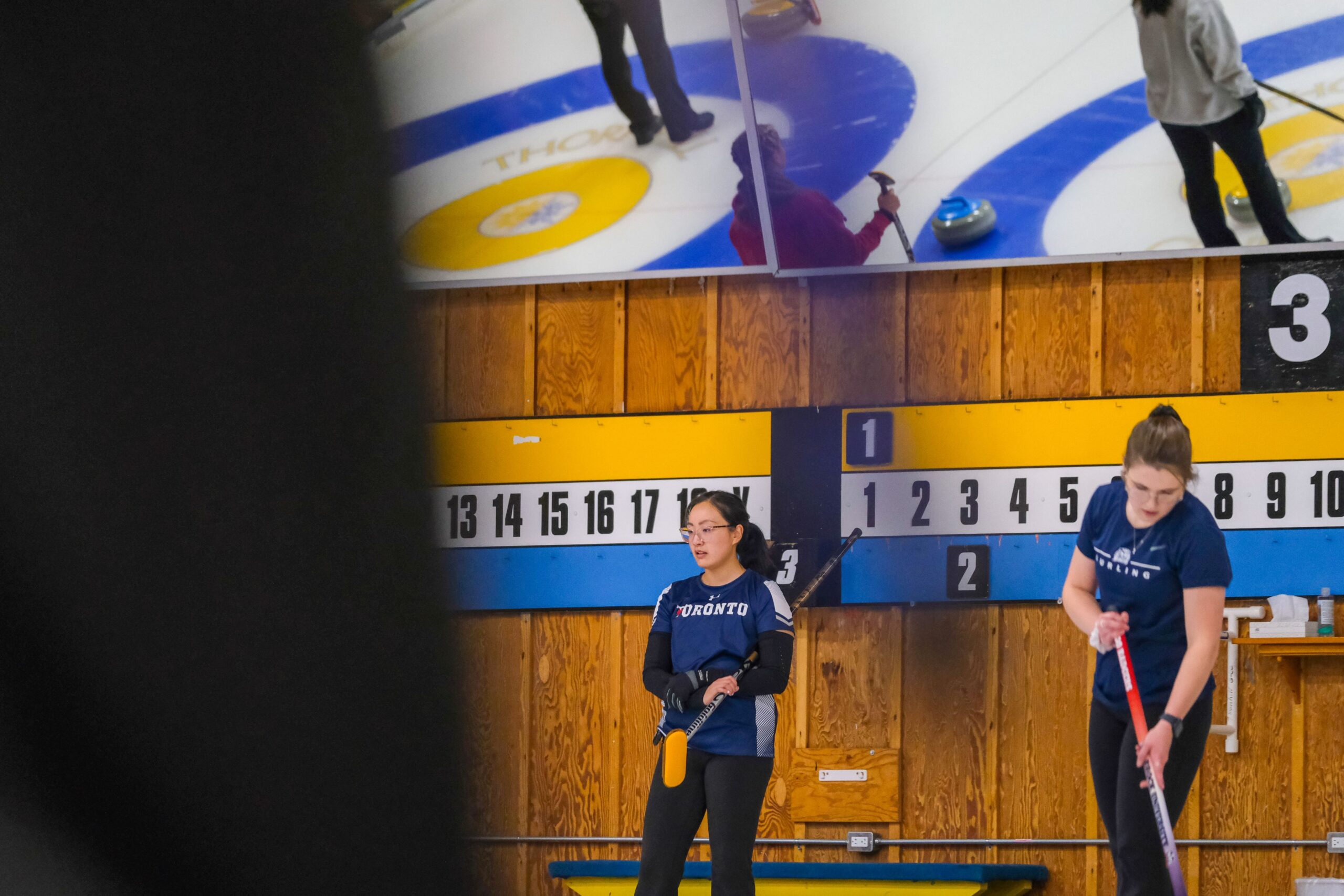
What makes a great curling player?
Curling is a mix of patience, strength and teamwork. A great player embraces the challenges of the game, and works to bring the best out of all teammates.
What makes a great scientist?
Science is a relentless curiosity to explore the unknown. A good scientist combines creativity, persistence, and critical thinking to investigate and solve some of the most challenging scientific questions we face in the world.

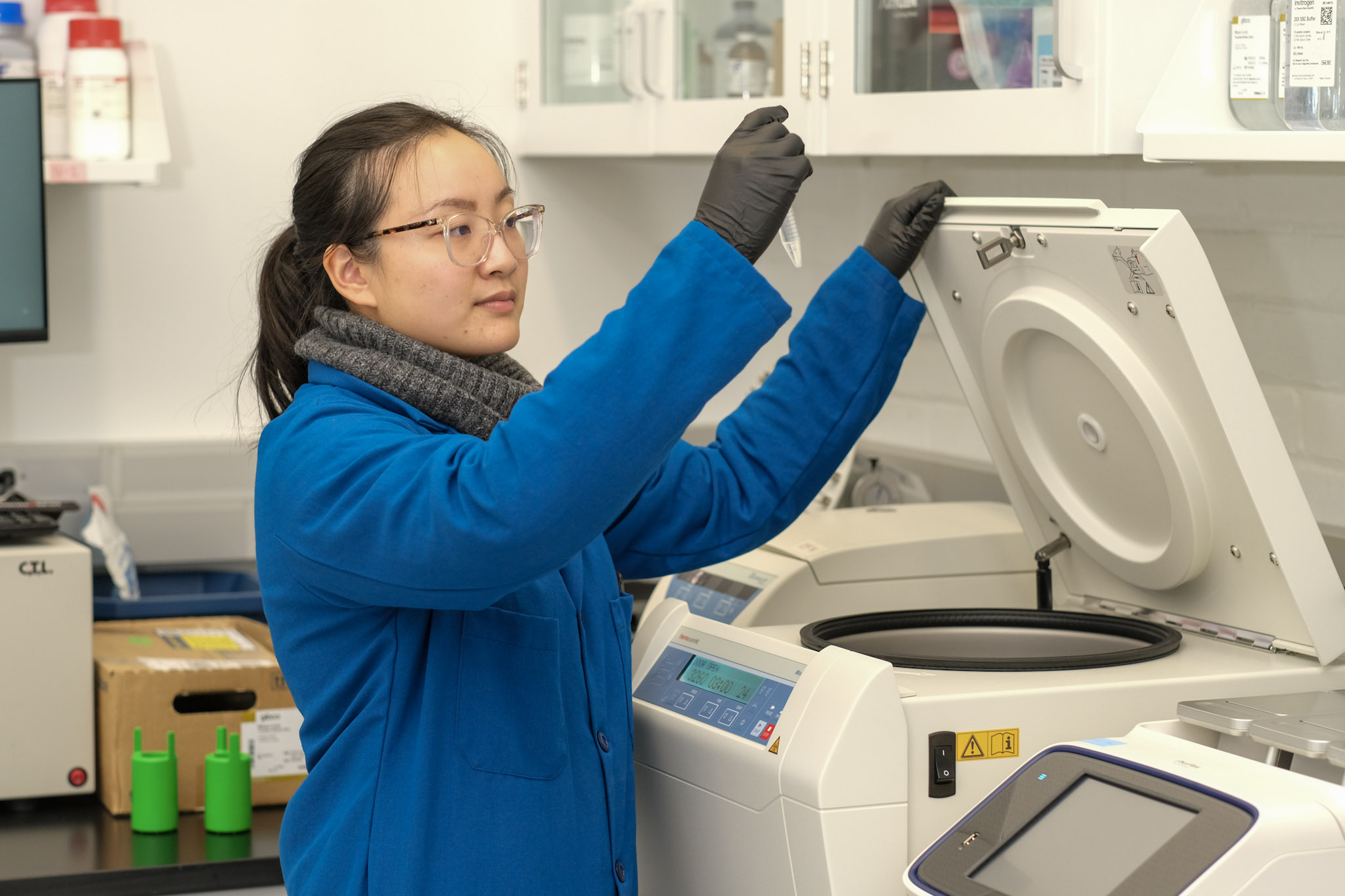
Can you approach curling with a scientific mindset? Or vice versa?
Danielle
Curling and science both require a resilient mindset. The resiliency to keep going and try again despite adversity is similar to shaking off a bad shot. Team communication and cooperativity in curling compares with the scientific method by taking advantage of coaches and mentors to write that paper or make that shot. We all work together as a lab and team to take advantage of our teammates’ strengths to achieve the best possible version of ourselves to translate to science and sport.
Janice
Being a scientist and a curler takes patience and practice. Both are crafts that take time for one to be good at it. Strategizing in the game of curling is similar to engineering. Developing the end to score points is like finding all the pieces necessary to make the best formulation for drug delivery. Curling taught me the importance of working in a cohesive unit to find success, much like the collaborations that take place in research projects.
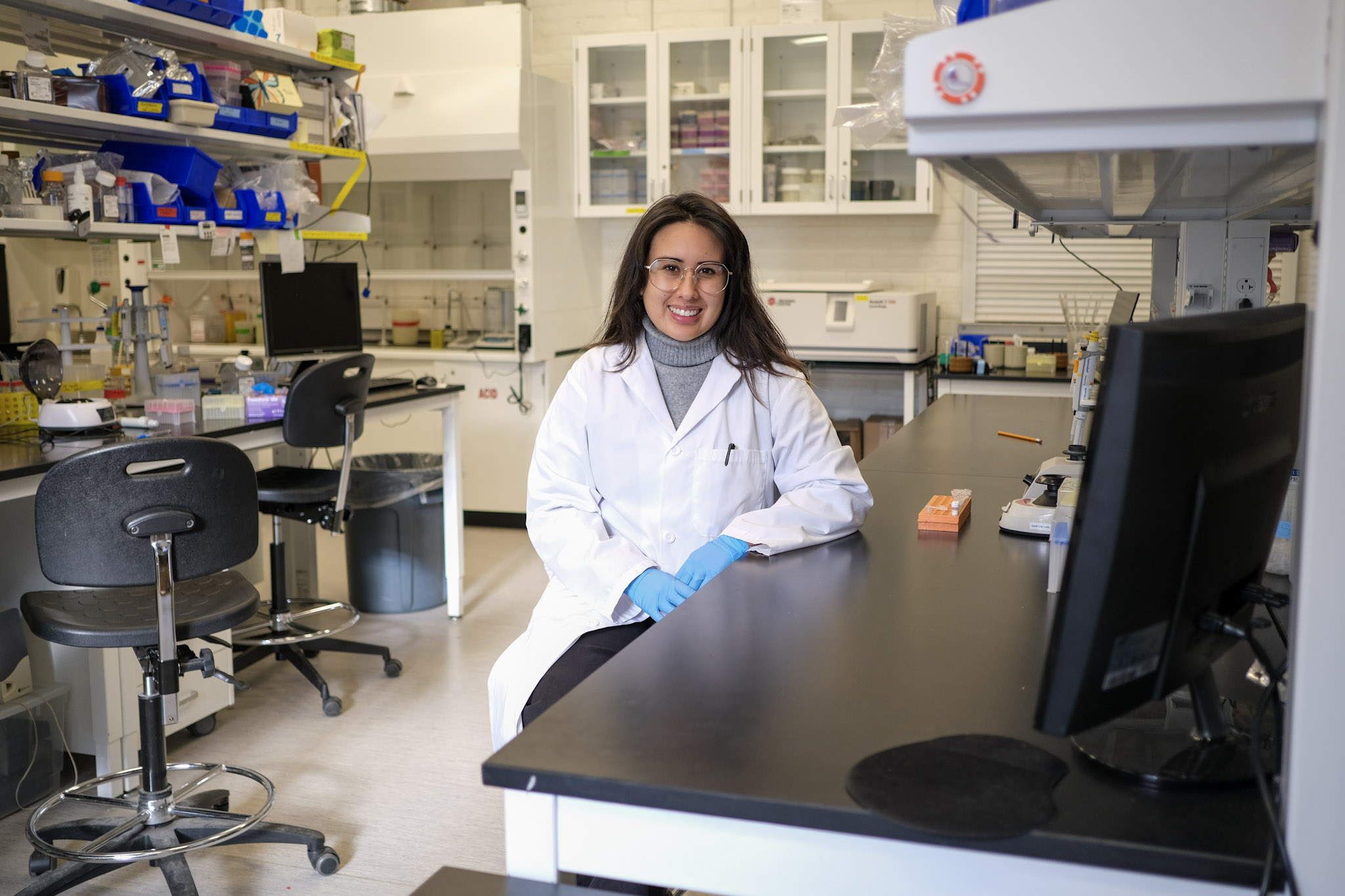

What’s your research project?
Danielle
My PhD intersects both synthetic biology and regenerative medicine. I am generating and validating a toolkit of genetic parts to engineer human stem cells in a repeatable and dependable manner. This toolkit contains parts such as constitutive and inducible promoters, fluorescent reporter genes, and transcriptional activator and repressor systems. Putting all the parts together, I hope to create a self-excision system that will be able to excise the integrated synthetic circuit in cells as a safety mechanism for cell therapies.
Janice
Currently, my PhD is focused on developing a lipid nanoparticle platform for the delivery of long non-coding RNAs (lncRNAs) as a new RNA therapeutic modality. The system aims to unlock the tremendous potential of utilizing lncRNAs as therapeutics and deliver large amounts of RNA systemically to reduce the number of treatments, enabling a more comprehensive approach to treating complex diseases.
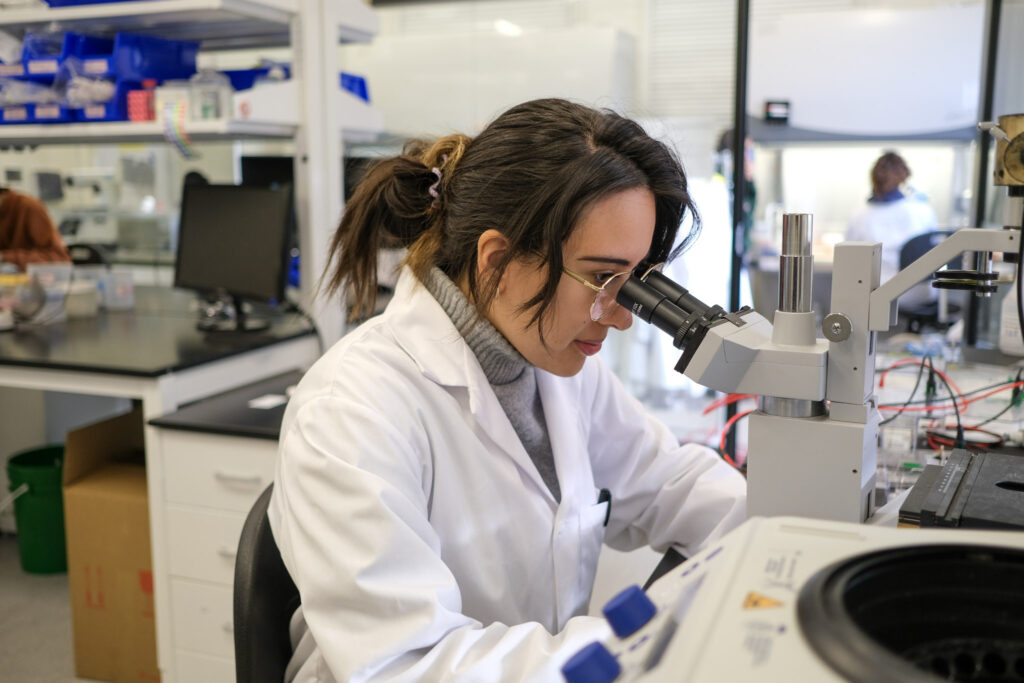
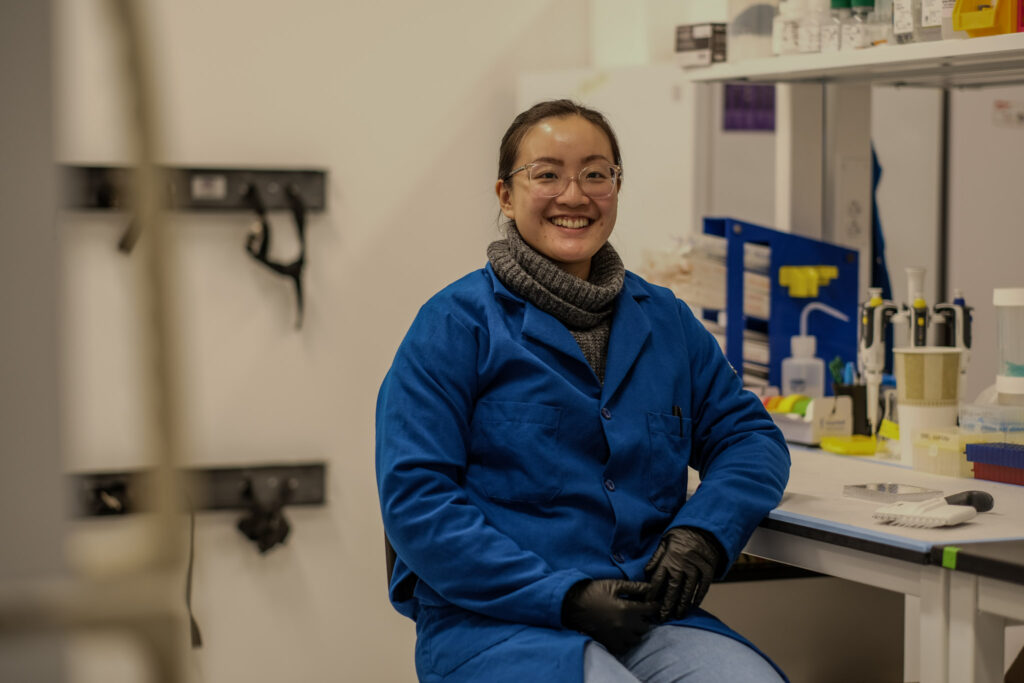
What’s next for you? On ice or in the lab?
Danielle
For my PhD, I am working on making the DNA circuits for the self-excision synthetic gene circuit for my project. I am also working on building the early stage startup founded by me and my labmates to create hypoxia-resistant cells. On the curling side, I am actively training to compete for the Mexican mixed doubles national team with my partner as well as training for the OUA Championships with the UofT team.
Janice
For my PhD, I look to work on the in vivo phase of the development of my lncRNA delivery technology and supporting the next generation of engineers through teaching Praxis courses in the Engineering Science Program. On the ice, I look forward to bonding with teammates and preparing for the OUA Championships to hopefully earn a spot at the U Sports Curling Championships.



